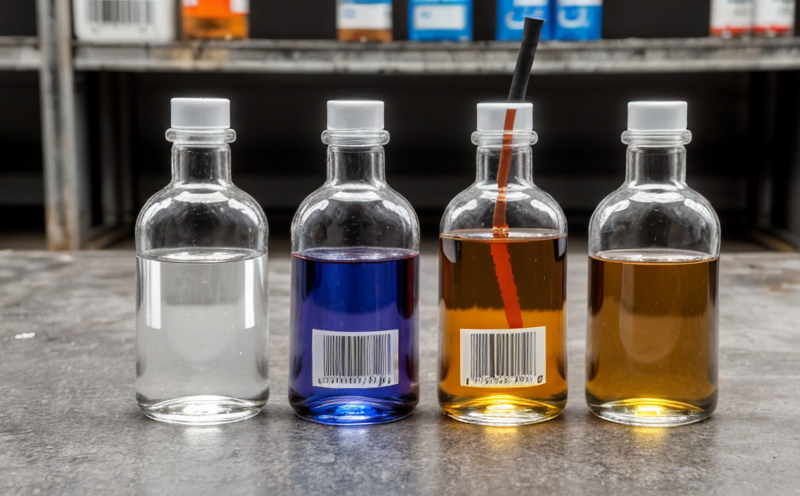DIN 53387 Weathering Stability Testing of Plastics
The DIN 53387 standard is a critical tool used in chemical testing to evaluate the weathering stability of plastics. This test assesses how well a plastic maintains its physical and mechanical properties under artificial conditions that simulate natural outdoor exposure, such as sunlight, humidity, heat, cold, and chemicals.
The primary goal of DIN 53387 is to provide a standardized method for testing the resistance of polymers to degradation by ultraviolet (UV) light, ozone, oxygen, and moisture. This test helps manufacturers determine if their materials are suitable for outdoor applications like building products, automotive parts, outdoor furniture, and packaging.
The test involves exposing a specimen to a combination of UV radiation, heat, and humidity in an accelerated manner. The exposure conditions are carefully controlled to mimic the effects that would typically occur over many years of natural exposure. This allows manufacturers to predict long-term performance without having to wait for extended periods under real-world conditions.
The DIN 53387 test is particularly useful because it can help identify potential issues early in the product development process, ensuring that materials selected are robust enough to meet customer expectations and regulatory requirements.
Before testing begins, specimens must be prepared according to specific guidelines. This includes cutting standard-sized samples from the material being tested, ensuring they are free of defects or surface irregularities. Once prepared, these samples undergo rigorous exposure in a laboratory setting designed to simulate outdoor weathering conditions.
The test results provide valuable information about the durability and reliability of plastic materials used across various sectors including construction, automotive, and packaging industries. By understanding how well your product withstands environmental factors such as sunlight and moisture, you can make informed decisions that improve both quality assurance processes and end-user satisfaction.
Understanding the key aspects involved in DIN 53387 testing is essential for those responsible for ensuring compliance with relevant standards or for researchers developing new materials. It also helps procurement teams select suppliers who adhere to high-quality practices when sourcing raw materials.
Scope and Methodology
| Parameter | Description |
|---|---|
| UV Exposure | The test exposes the samples to ultraviolet light from a xenon-arc lamp, which simulates solar radiation. |
| Humidity Control | Relative humidity is maintained at 65% ±2%, and temperature ranges between 40°C and 70°C depending on the test conditions specified in the standard. |
| Cycle Duration | The total exposure time depends on the type of plastic being tested but typically lasts several weeks or months. |
| Specimen Preparation | Samples are cut to standardized dimensions and cleaned prior to testing. |
| Test Parameters | Acceptance Criteria |
|---|---|
| Initial Color Change | No more than 20% change in color after the test period. |
| Surface Roughness | Changes in surface roughness should not exceed the initial value by more than 50 micrometers. |
| Mechanical Properties | Maintain at least 70% of original tensile strength and elongation at break. |
Customer Impact and Satisfaction
- Improves product quality by identifying potential weaknesses early in the design process.
- Reduces costs associated with field failures through better material selection and formulation.
- Enhances brand reputation by delivering durable, reliable products that meet customer expectations.
- Aids regulatory compliance ensuring adherence to relevant standards like DIN 53387.
International Acceptance and Recognition
- DIN 53387 is widely used globally due to its comprehensive approach towards evaluating weathering resistance.
- It has been adopted by several countries including Germany, Switzerland, Austria, and parts of Eastern Europe.
- The standard's acceptance in these regions highlights its relevance for international trade involving plastic products.





